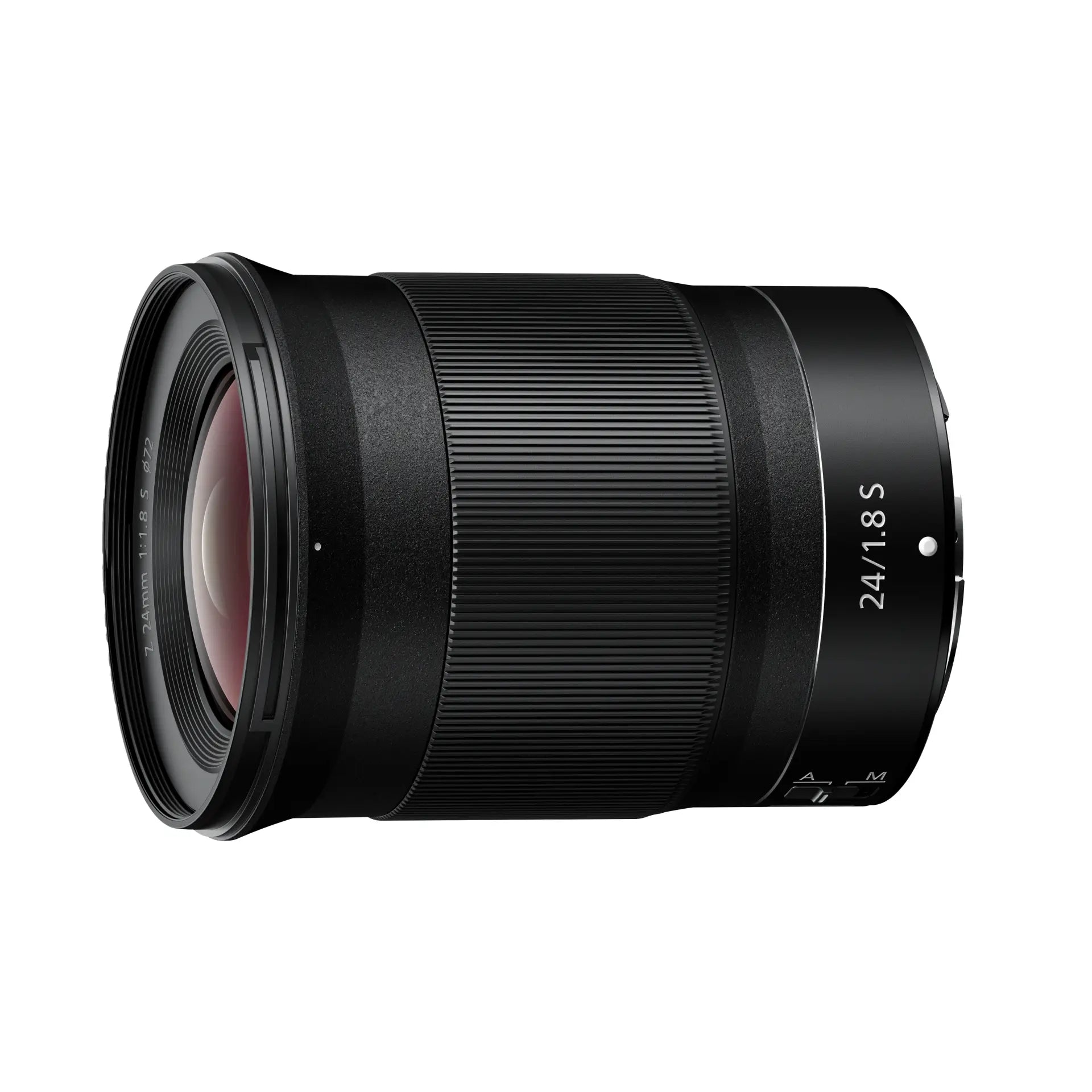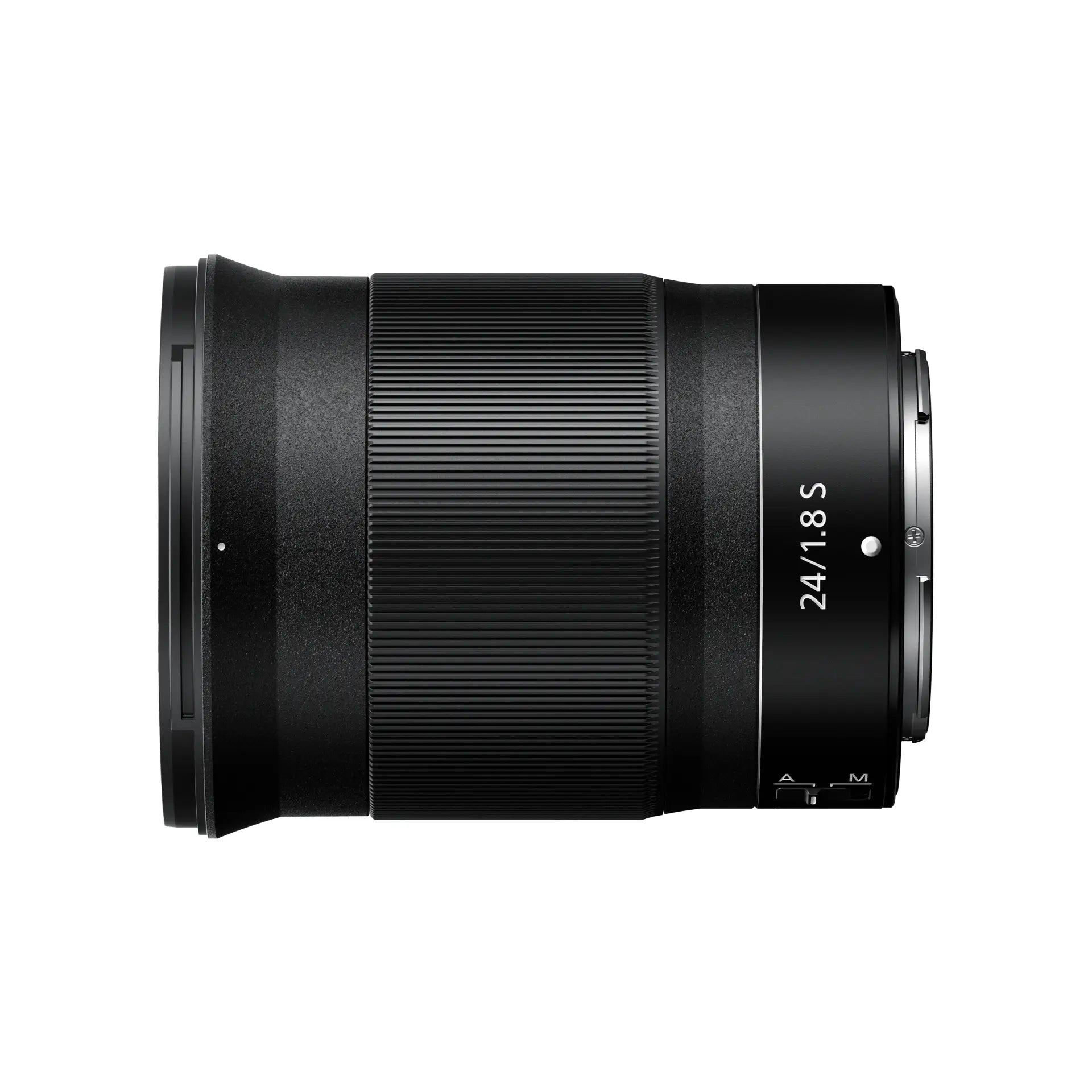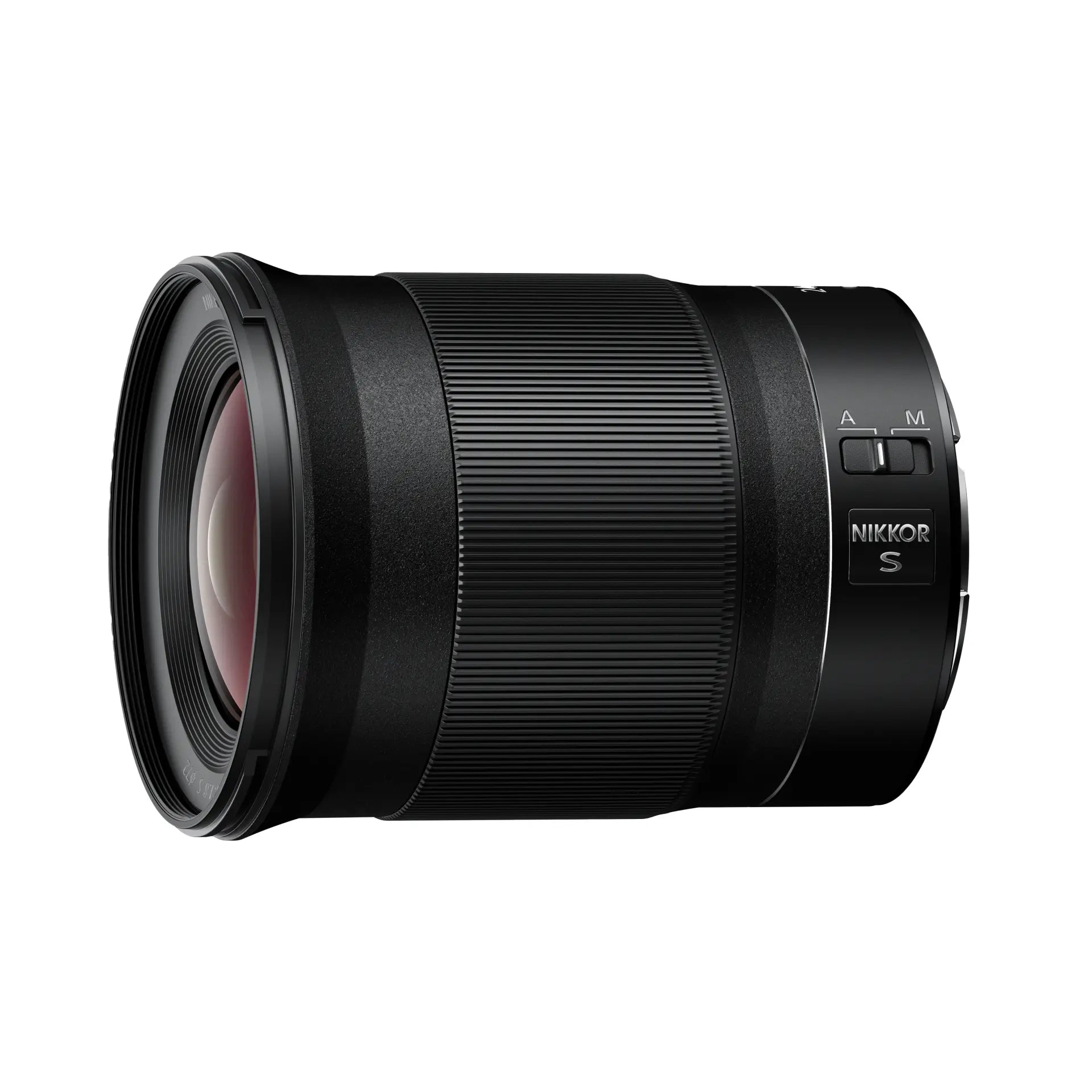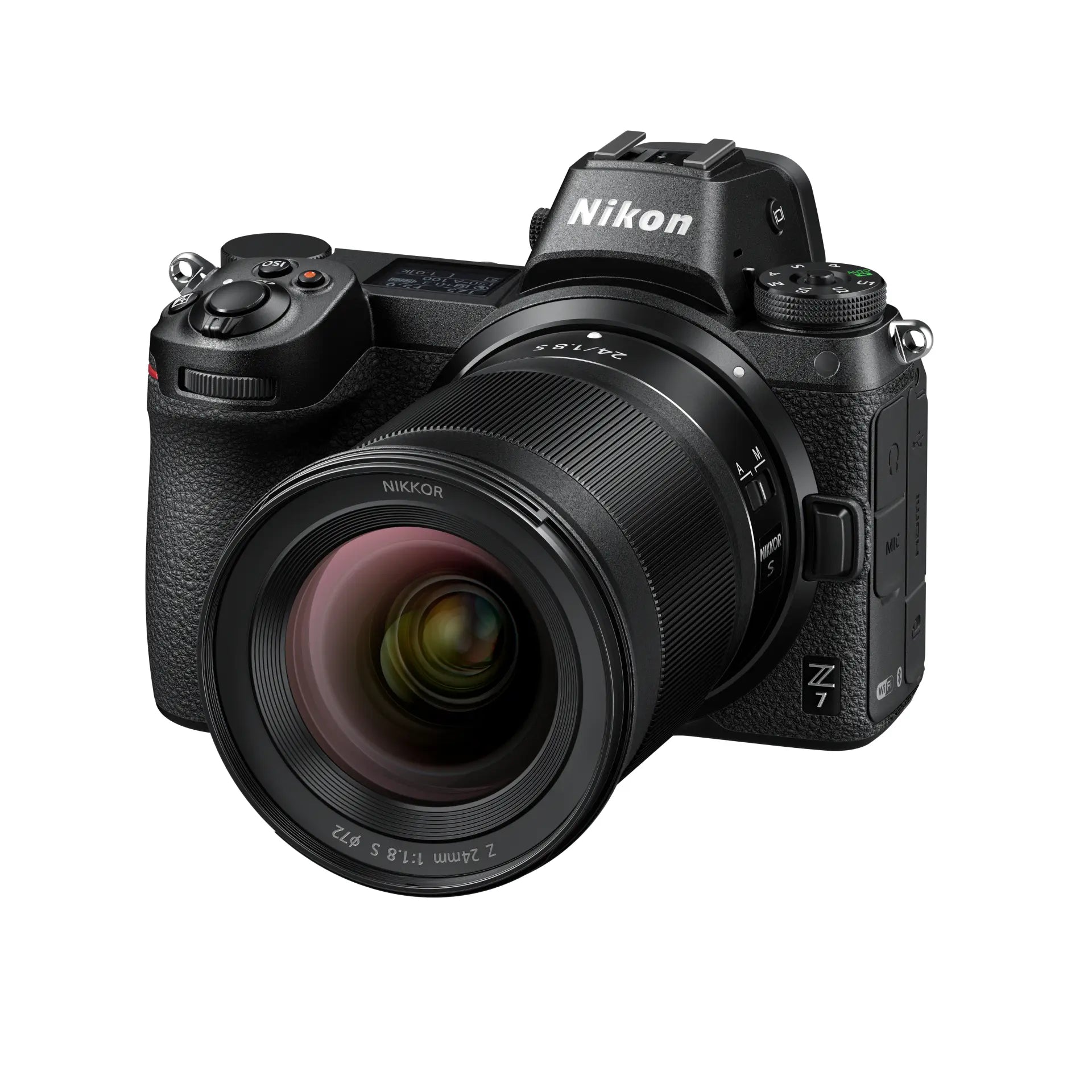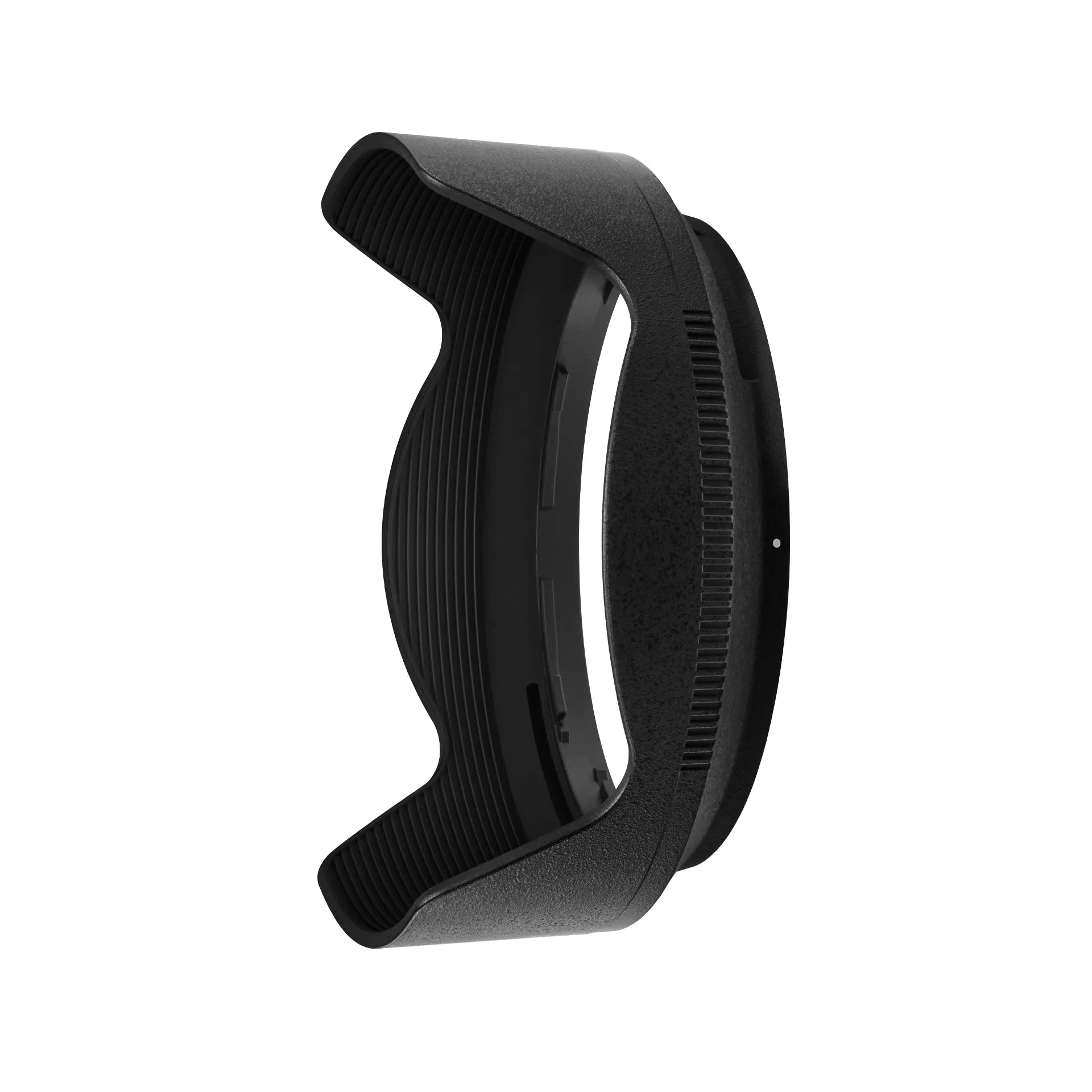Product Description
Nikon Nikkor Z 24mm f/1.8 S Mirrorless Prime Lens
The Nikon Z 24mm f/1.8 S Mirrorless Prime Lens is a standout addition to Nikon’s line of mirrorless prime lenses, designed to deliver exceptional performance for landscape, architectural, and general wide-angle photography. With its impressive optical design and versatile features, this lens ensures outstanding image quality and creative flexibility.

Key Features:
- Large Maximum Aperture: f/1.8 for excellent low-light performance and beautiful background blur.
- Edge-to-Edge Sharpness: Designed to deliver consistently sharp images from centre to edge, even at wide apertures.
- Wide 24mm Focal Length: Ideal for capturing expansive landscapes, architectural details, and dynamic wide-angle shots.
- Nano Crystal Coating: Nikon's advanced anti-reflective coating significantly reduces ghosting and flare for improved image clarity and contrast.
- Weather-Sealed Construction: Built to withstand challenging shooting conditions with a durable, weather-resistant design.
- Minimum Focusing Distance: Just 0.25m, allowing for close-up shots and creative framing.
- Fast, Near-Silent Autofocus: Ensures smooth and discreet focusing, making it ideal for both stills and video.
- Control Ring: Customisable for aperture control, exposure compensation, or manual focus, providing seamless operation during shooting.

Superior Optical Performance:
- Advanced Optics: The lens features 12 elements in 10 groups, including one Extra-Low Dispersion (ED) glass element and four aspherical lens elements, enhancing sharpness and reducing aberrations.
- Nano Crystal Coat: Applied to lens elements to combat ghosting and flare, resulting in sharper, clearer images with better colour accuracy.

Versatile and Creative:
- Wide-Angle Advantage: The 24mm focal length is perfect for capturing wide scenes and architectural compositions with minimal distortion.
- Close Focusing: With a minimum focusing distance of just 0.25m, you can explore close-up details and creative perspectives.


Ideal for Video:
- Silent Autofocus: The near-silent autofocus system is ideal for video recording, ensuring no distracting noise during filming.
- Control Ring: Offers silent and precise control over aperture and exposure compensation, and can be switched to manual focus mode when needed.

Supplied Accessories:
- LC-72B: 72mm Snap-on Front Lens Cap
- LF-N1: Rear Lens Cap
- HB-88: Bayonet Lens Hood
- CL-C1: Lens Case

Specifications:
- Focal Length: 24mm
- Maximum Aperture: f/1.8
- Minimum Aperture: f/16
- Angle of View: 84° (for FX-format cameras)
- Minimum Focusing Distance: 0.25m
- Lens Construction: 12 elements in 10 groups
- Filter Size: 72mm
- Weight: Approx. 450g

The Nikon Z 24mm f/1.8 S Mirrorless Prime Lens is an essential tool for photographers and videographers seeking a wide-angle lens with exceptional image quality, versatile shooting capabilities, and robust build. Whether you're capturing stunning landscapes, intricate architectural details, or engaging video content, this lens delivers reliable performance and outstanding results.
Payment & Security
Your payment information is processed securely. We do not store credit card details nor have access to your credit card information.

